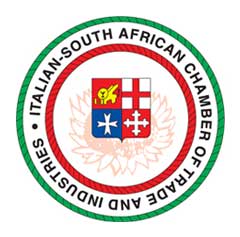Stellenbosch per un giorno chiude Church Street per fare spazio all'arte di Valerio Berruti
- Details
- Created on Friday, 07 December 2012 16:09
 Nel bene o nel male la città universitaria di Stellenbosch resta un posto speciale. Simbolo e roccaforte dell'intolleranza e dell'esclusione fino all'ultimo decennio del secolo scorso, è oggi un faro di cultura tollerante e inclusiva. Non sorprende quindi che ieri Church Street, la strada della chiesa, i cento metri che tutti devono percorrere per dire di esserci stati, sia stata chiusa al traffico per consentire alla galleria d'arte Smac della famiglia Sandri la proiezione all'aperto di "Udaka".
Nel bene o nel male la città universitaria di Stellenbosch resta un posto speciale. Simbolo e roccaforte dell'intolleranza e dell'esclusione fino all'ultimo decennio del secolo scorso, è oggi un faro di cultura tollerante e inclusiva. Non sorprende quindi che ieri Church Street, la strada della chiesa, i cento metri che tutti devono percorrere per dire di esserci stati, sia stata chiusa al traffico per consentire alla galleria d'arte Smac della famiglia Sandri la proiezione all'aperto di "Udaka".
Questo il titolo della mostra e dell'animazione di Valerio Berruti, le cui immagini in forma di pannelli di iuta disegnati con la terra scura della "culla dell'umanità" costituiscono la mostra a lui dedicata nelle sale al primo piano dell'edificio, organizzata e allestita da Martina Venturi.  "Udaka" è la storia di una bambina e della sua palla di fango, raccontata da Valerio con oltre 300 disegni e da Simon Attwell and Zolani Mahola della band Freshly Ground in musica e versi di una struggente dolcezza. Nella galleria la mostra si compone dei singoli disegni e della relativa animazione. Una creazione artistica ispirata da una delle piccole cose di tutti i giorni che hanno popolato le giornate dell'artista nell'anno trascorso nel parco della scultura della Fondazione Nirox nel comprensorio delle grotte a ovest di Johannesburg, scoperte a fine Ottocento da Guglielmo Martinaglia, che videro gli ominidi nostri comuni progenitori muovere i primi incerti passi su questa terra e che vanno appunto sotto il nome di "Culla dell'Umanità".
"Udaka" è la storia di una bambina e della sua palla di fango, raccontata da Valerio con oltre 300 disegni e da Simon Attwell and Zolani Mahola della band Freshly Ground in musica e versi di una struggente dolcezza. Nella galleria la mostra si compone dei singoli disegni e della relativa animazione. Una creazione artistica ispirata da una delle piccole cose di tutti i giorni che hanno popolato le giornate dell'artista nell'anno trascorso nel parco della scultura della Fondazione Nirox nel comprensorio delle grotte a ovest di Johannesburg, scoperte a fine Ottocento da Guglielmo Martinaglia, che videro gli ominidi nostri comuni progenitori muovere i primi incerti passi su questa terra e che vanno appunto sotto il nome di "Culla dell'Umanità".
L'apertura ufficiale della mostra è stata fatta ieri non, come usa, subito dopo l'arrivo degli invitati, ma poco prima della loro partenza, dato che è stato necessario aspettare che si facesse buio per proiettare l'animazione su uno schermo calato davanti alla facciata dell'edificio in cui ha sede la galleria d'arte Smac. Fino a quel momento il pubblico, fra cui numerosi esponenti del mondo della cultura, aveva avuto agio di osservare e valutare le tele esposte e di intrattenersi con l'artista, in procinto di rientrare in Europa per mettere mano a un nuovo progetto che lo porterà a Parigi per finalizzare il programma di lavoro per i prossimi mesi. In fieri un film di media durata, parte dal vero e parte animazione, che avrà come punto focale una giostra di quelle con i cavalli che ancora si producono in Emilia-Romagna. Berruti ne sarà il regista e lo scenografo e avrà al suo fianco il produttore che ha vinto l'Oscar con il film "The Artist". A fare gli onori di casa ieri, assieme ai figli, anche Emiliano Sandri, indotto a lasciare la sua residenza di campagna nella zona di Wellington dal desiderio di essere accanto a Valerio Berruti, con il quale ha scoperto di avere in comune un minuscolo villaggio delle Langhe che si chiama Verduno. Qui sono le radici della famiglia Sandri e qui Berruti ha deciso fin da ragazzo di vivere e lavorare in quello che era il rudere di una chiesa che ha poi amorevolmente restaurato.
A fare gli onori di casa ieri, assieme ai figli, anche Emiliano Sandri, indotto a lasciare la sua residenza di campagna nella zona di Wellington dal desiderio di essere accanto a Valerio Berruti, con il quale ha scoperto di avere in comune un minuscolo villaggio delle Langhe che si chiama Verduno. Qui sono le radici della famiglia Sandri e qui Berruti ha deciso fin da ragazzo di vivere e lavorare in quello che era il rudere di una chiesa che ha poi amorevolmente restaurato.
Davanti al pubblico di invitati e curiosi che aveva occupato la carreggiata della Church Street si sono presentati per l'inaugurazione, con il console Edoardo Vitali, i tre protagonisti di questa giornata molto importante per la cultura italiana in Sud Africa e cioè lo stesso Berruti, la curatrice dell'evento Martina Venturi e il direttore della Smac Baylon Sandri. Nei discorsi l'accento è stato posto sull'importanza di questa mostra, non soltanto per il calibro dell'artista, ma anche in quanto ulteriore avanzamento verso una sempre più frequente e qualificata presenza di artisti italiani sia a Stellenbosch che nel resto del Sud Africa.
 Qui di seguito l'intervento introduttivo di Baylon Sandri:
Qui di seguito l'intervento introduttivo di Baylon Sandri:
"We are very proud to welcome Italian artist Valerio Berruti to Stellenbosch. Firstly we need to thank a young Italian curator – Martina Venturi who invited Valerio to do a residency at the Nirox Foundation in 2011 – where he conceptualised what is now a large body of work entitled UDAKA – the Zulu word for mud – centring around a young child whom he met whilst doing his research – he created an animation featuring the child bending to touch the red soil at its feet. The young child serves as metaphor - in which we see amongst other things; ourselves - a journey begins and the artist weaves a web of intricacy and meaning from what is essentially a very simple outline.
The project commenced with a monumental Land art work - unveiled last week at the Nirox Foundation– constructed from more than 100 tons of lime-washed stone - outlining the face of a child on a hilltop – visible from Google earth – this was followed by an outdoor projection over a lake and eventually now to the exhibition in Stellenbosch which includes: installations, frescoes, video, sculpture, drawings and paintings – the scope of UDAKA will be documented in a publication next year produced in collaboration with Silvana Editoriale from Italy and the book should be available when this exhibition is presented in an expanded form at the University of Johannesburg Museum in November 2013 – a special word of thanks to the curator of the museum Annali Dempsey – who is here tonight – she has wholeheartedly embraced this project.
Another subtext to this exhibition – when Martina Venturi introduced me to Valerio in 2011 – I remembered his work clearly from the Venice Biennale in 2009 – where he was the youngest selected artist and his installation was the focal point of the Italian Pavilion – a work accompanied by the music of Paolo Conte – what I did not know was that Valerio Berruti lived and worked in a small town, a stone’s throw away from where my Father was born and where my Uncle and family live. A very special part of the world to us – the Langhe region of Piedmonte in Northern Italy – as it turns out – and this is why I need to protect Valerio from all the ladies who have been asking me about the well-built handsome Italian artist – Valerio’s girlfriend Elisa is actually from our very village – Cossano Belbo (probably the size of Koekenaap) – so you can imagine the coincidence or fete - this uncanny connection makes tonight’s exhibition a very special occasion on a personal level.
I would now like to hand the microphone to another “youngest “ Italian – the youngest Italian consul in Cape Town – barely 18 years of age - Edoardo Vitali to say a few words – some in Italian I hope – so that I can be relieved of my duty in that regard.
Before we move to the moment that we have all been waiting for – I must thank Roberto Bottega –of Vinotria (especially for the Barbera wine – from the same Langhe region) and for his own wines (from the Idiom stable) – the Rosso di Stellenbosch and the Bianco di Stellenbosch which you should have tasted tonight. We will now project Valerio Berruti’s animation – Ezinzulwini – the name meaning – in the depth – coined by Zolani Mahola of the band Freshly Ground, together with Simon Attwell, she composed the music for this work in conjunction with other band members – such as, Keith Farquuson and a special word of thanks to Peter Cohen who facilitated this amazing collaboration with the artist – happy Christmas, happy new year - enjoy – we will let it run for a few loops".
Dopo di lui ha parlato il console Vitali: "Buonasera a tutti, ai connazionali italiani e ai nostri amici sudafricani. Bevenuti a questa meravigliosa serata organizzata presso la SMAC Gallery di Stellenbosch, nel corso della quale abbiamo avuto ed avremo l’occasione di apprezzare il lavoro di uno dei più rappresentativi giovani artisti italiani, Valerio Berruti.
Il mio intervento questa sera sarà estremamente breve. Non essendo un gallerista, un curatore d’arte né – ahimé – un artista, lascerò che siano altri a spiegare l’opera di Berruti. Io mi limiterò solamente a ringraziare chi ha reso possibile questa serata. Baylon Sandri, proprietario della SMAC Gallery. Martina Venturi, curatrice dell’artista, che ha lavorato in collaborazione con la Nyrox Foundation di Johannesburg. Un ringraziamento va anche ha reso ancor più gradevole la serata con dell’ottimo vino italiano, e dunque a Vinotria di Bottega ed Estrada Belli. E, last but not least, all’artista stesso, Valerio Berruti. La sua presenza qui questa sera ci onora in modo particolare.
Desidero ringraziare gli artefici di questa serata perché hanno reso possibile presentare in Sud Africa l’opera di un giovane e pur affermato artista italiano. In tal modo, hanno contribuito a promuovere qui l’arte del nostro Paese, la cui vivacità e la cui tensione artistica sono state grandemente influenzate proprio dal Sud Africa. Voglio infatti ricordare che l’opera che apprezziamo questa sera è il risultato di un periodo di ricerca ed elaborazione che Valerio Berruti ha qui condotto negli scorsi mesi. Arte italiana che si presenta al Sud Africa dopo aver idealmente “assorbito” l’essenza e l’ispirazione di questa terra. Cosa c’è di più significativo di questo nel promuovere ancora più strette relazioni bilaterali, anche sul piano artistico?
La speranza – e forse più di una semplice speranza, dal momento che si parla già di progetti concreti per un immediato futuro – è che questa esposizione possa essere solo il primo passo di una serie di iniziative che porti ad una feconda e durevole collaborazione tra giovani artisti italiani e sudafricani, tra l’Italia ed il Sud Africa. È con questo auspicio che vi lascio ora alla performance predisposta da Valerio Berruti, augurandovi ancora una volta una buona serata."


Le informazioni essenziali sulla mostra e sull'artista sono contenute in questo comunicato stampa diffuso dagli organizzatori:
SMAC Art Gallery is proud to present UDAKA, a solo exhibition by Italian artist Valerio Berruti in Stellenbosch. Following his recent solo exhibition at the Pola Museum in Tokyo after the completion of his residency in Japan, UDAKA marks Berruti’s inaugural exhibition in South Africa.
UDAKA – the Zulu word for mud – consists of frescos, drawings, multi-media installations and video projections, and is the culmination of Berruti’s two year-long engagemnet with South Africa. Berruti was deeply moved by his 2011 residency at the Nirox Foundation, situated in the Cradle of Human Kind, Gauteng. It is here where he formally conceptualised this body of work based on a young African child who he met in the area during his research.
Berutti’s work reveals both his interest in childhood as an artistic subject, as well as his preoccupation with the simplicity of lines. He depicts a collective imagination where children become metaphors in which everyone is able to recognize themselves. The child depicted by Berutti’s perfected and apparently effortless line leads us to more complex structures of meaning, associations and feelings. Berruti’s lines transmit a purity, innocence, fragility, vulnurability and nostalgia. Soil and mud are used throughout the works in the exhibition and represent the conflict and turmoil of a deeply troubled land.
The first installation of ten large jute frescos follow on from one another creating a short reel of moving images. The viewer is an active participant in creating the narrative of the child holding and playing with a sphere painted using soil. The sphere, and its associations with infinity and creation, can be seen on the reverse side of the fresco, giving light to a second interpretation away from the initial immediate reading. As a focal point, the sphere becomes an active element in the work creating its own rhythm and movement.
In the fresco triptych, a child is shown kneeling down to touch the ground in play, capturing the silent moment when a child enters their own world – elevated and apart. This contact with the earth, its soil, permeates the exhibition.
In Infinity is a conceptual silent animation created from fresco drawings. The animation is presented as a mirror reflection, alluding to the infinity symbol. Again, the sphere is included as a universal shape for unity, completeness and infinity.
A series of oil pastel and enamel drawings on paper depict the child in isolation. Here, Berruti plays with perspectives, showing the child from different angles.
Ezinzulwini, meaning ‘in the depths’, is the title of a second video animation comprising 321 line drawings of a child kneeling down and touching the water. Music especially composed by Simon Attwell and Zolani Mahola of Freshly Ground, accompanies the animation in a unique collaboration between music and visual art.
The last room contains a sculptural installation. The viewer is invited to enter the room and walk around the installation to view the sculpture of a kneeling child.
Valerio Berruti was born in Alba, Piemonte, Northern Italy in 1977. He graduated in art criticism at D.A.M.S. Torino. He lives and works in Verduno, in a 17th century deconsecrated Church, bought and restored by the artist in 1995. He was the youngest selected artist at the 53rd Venice Biennale in 2009 and recently won the prestigious prize “Luci di Artista 2012".
La mostra resterà aperta fino al 19 gennaio.
SMAC ART GALLERY
First Floor, De Wet Centre, Church Str, Stellenbosch
Tel: +27 (0)21 887 3607 | Fax: +27 (0)21 887 7624
In-Fin-Art Building, Cnr of Buitengracht & Buitensingel Str, Cape Town
Tel: +27 (0) 422 5100
This email address is being protected from spambots. You need JavaScript enabled to view it.
| www.smacgallery.com




















